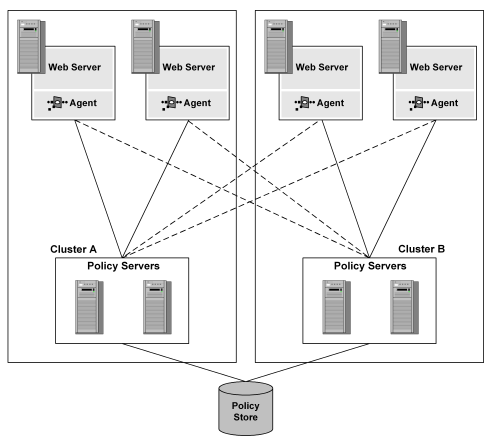Load balancing and failover in a SiteMinder deployment provide a high level of system availability and improve response time by distributing requests from SiteMinder Agents to Policy Servers. Defining clusters in combination with load balancing and failover further enhance the level of system availability and system response time.
Traditional round robin load balancing without clusters distributes requests evenly over a set of servers. However, this method is not the most efficient in heterogeneous environments, where computing powers differ, because each server receives the same number of requests regardless of its computing power.
Another problem with efficiency can occur when data centers are located in different geographical regions. Sending requests to servers outside a certain locale can lead to the increased network communication overhead, and in some cases to the network congestion.
To address these issues and to improve system availability and response time, you can define a cluster of Policy Servers and associated Web Agents configured to perform (software-based) load balancing and failover.
Policy Server clusters provide the following benefits over a traditional load balancing/failover scheme:
The following figure illustrates a simple SiteMinder deployment using two clusters:

Consider Cluster A and Cluster B as distributed in two different geographical locations, separated by several time zones. By dividing the Web Agents and Policy Servers into distinct clusters, the network overhead involved with load balancing across geographically separate regions is only incurred if the Policy Servers in one of the clusters fail, requiring a failover to the other cluster.
| Copyright © 2010 CA. All rights reserved. | Email CA about this topic |